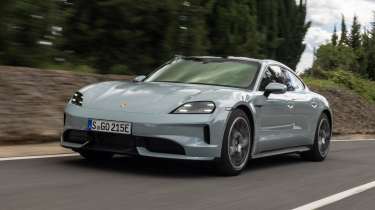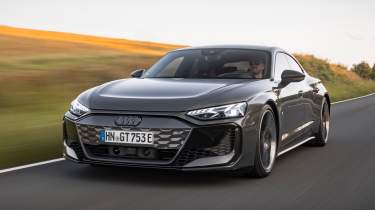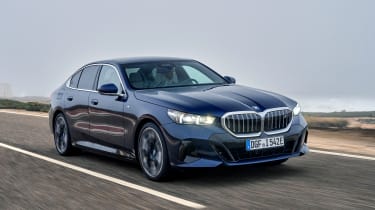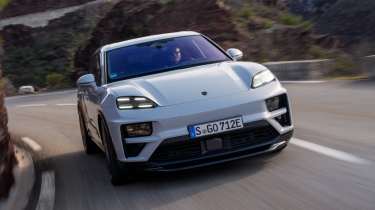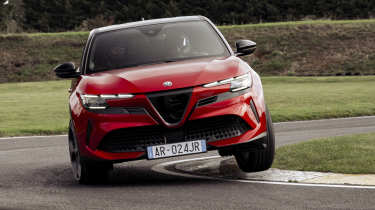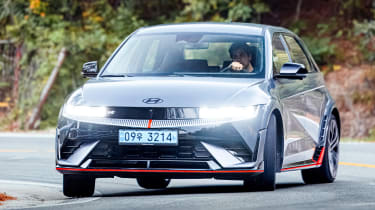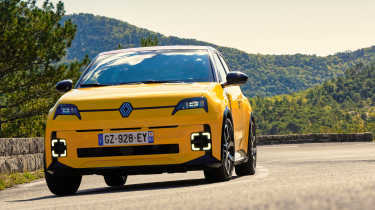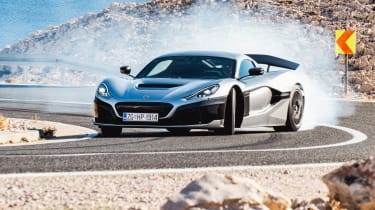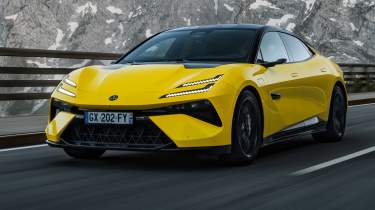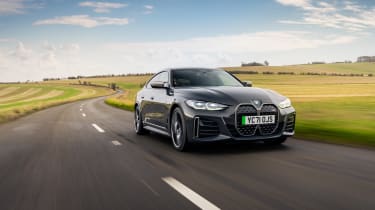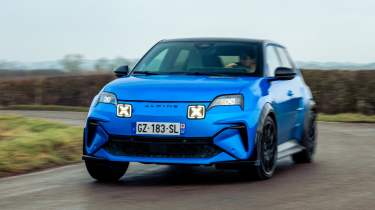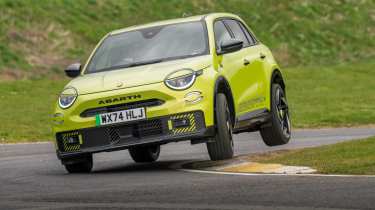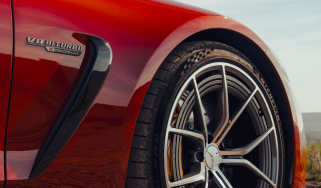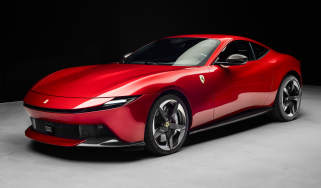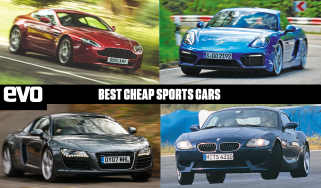Best electric cars 2025 – great EVs from hot hatches to supercars
There's a huge variety of electric cars on sale in 2025 – here are the best examples the breed
It’s no longer a case of if but when electric cars become the mainstream, taking over daily driver duties without any tailpipe emissions. Many have made the switch thanks to the performance benefits, refinement and on-paper green credentials of electric cars, and emissions regulations and government ICE bans mean that EVs will become even more widespread in the new car market in the future.
Yet for some who take pleasure from driving, the electric car has long been seen as a threat, lacking the sound and emotional characteristics that come from combustion engines. The good news is there may still be a place for traditional performance cars in our electrically-driven future thanks to synthetic fuels, even if the majority of our day-to-day movements will be handled by batteries.
So, with manufacturers now getting the hang of battery electric vehicles, and some of the biggest names creating some very impressive new models, which are evo’s current favourite EVs? From sports saloons, hot hatches to crossovers and hypercars, we’ve listed the best models on sale in 2025 below.
Top ten best electric cars 2025
- Porsche Taycan
- Audi e-tron GT
- BMW i5
- Porsche Macan Electric
- Alfa Romeo Junior
- Hyundai Ioniq 5 N
- Renault 5
- Rimac Nevera
- Lotus Emeya
- BMW i4
- Alpine A290
- Abarth 600e
Porsche Taycan
The Porsche Taycan has had a while to mature into the marketplace since it launched in 2019, and in the process it's become one of the very best electric cars on sale. Having received comprehensive updates to its powertrain, battery tech and chassis this year, the Taycan is now almost without weakness (ignoring question marks over residual values, that is...).
Every Taycan is quick – even the base rear-drive version hits 62mph in 4.8sec – but more important is that the driving experience feels distinctly Porsche-like. It steers with supreme accuracy and precision, and despite weighing 2090kg in its lightest form, it corners with the sure-footed poise of a genuine sports saloon. Porsche's Active Ride suspension technology comes to the fore here, giving the Taycan a freakish ability to resist roll and working all four tyres evenly through corners. It's one of the very best handling EVs you can buy, and the Taycan now has the range and efficiency to back this up, achieving up to 421 miles from a charge in single-motor guise. Other manufacturers have some catching up to do.
Audi e-tron GT
Building on Porsche’s hard work with the Taycan is Audi’s take on the large premium EV, the e-tron GT. Using the same J1 platform as the Taycan, the Audi takes a more laid-back approach with more emphasis on cruising ability rather than trying to feel like a sports car. The e-tron GT was updated in 2024 to bring its powertrain, range and chassis tech up to speed with the latest Taycan, and it makes for a compelling alternative to its relative from Stuttgart.
It's less tactile and intuitive to drive quickly, but the e-tron GT still has impressive polish, speed and control. The facelifted version gets up to 912bhp in RS Performance form for truly astonishing levels of performance, but the S e-tron GT offers all the power you'd ever need (671bhp) and a healthy 374-mile range, supporting its GT credentials. Another string in its bow is an optional active suspension system, which gives the e-tron GT a sometimes freakish level of ride comfort and enormous support at each corner. This blend of talents makes it one of the best electric supersaloons you can buy.
BMW i5
For its new wave of electric cars, BMW is taking a different approach to the likes of Audi and Mercedes. Rather than producing bespoke EVs based on dedicated platforms, cars like the i5 (and the i4 that also makes this list) are based on the same CLAR architecture as their combustion-engined counterparts; while that might sound like a disadvantage, it means that these electric models capture all the traditional attributes that define the brand.
The i5 may be the same size as a 7-series from a couple of generations ago, but it still drives with the poise and precision you'd expect of a 5-series. The flagship M60 version is crushingly effective, thanks to the addition of a front motor for four-wheel drive and 593bhp, but it must be said that the M treatment doesn't conjure a particularly absorbing driving experience. The M60 is all about reassuring grip and control rather than genuine involvement, and it isn’t the most efficient EV by current standards either – its quoted 320-mile range is around 100 less than what a Taycan delivers.
Porsche Macan Electric
Porsche’s second-generation Macan arrives with a lot resting on its shoulders. Not only is it the follow up to the runaway sales success that was the original Macan, it debuts a new PPE electric car platform that’s been jointly developed with Audi to offer next-gen performance, range and dynamic ability. It’s a calling card for what’s to come from the new wave of Porsche and Audi EVs.
It doesn’t take long to realise that Porsche has executed the electric SUV formula very well at the first time of asking. Aside from its occasionally lumpy ride quality, Macan drives with the polish you’d expect from a Stuttgart product, and in Turbo form, there isn’t much that could stay with it on a technical road – sports cars included. You can’t use its full 630bhp potential for long without risking your licence, but the way the Macan can carry speed and dance out of corners is impressive. Even more so when you consider that it’s also refined over long distances, and weighs a faintly absurd 2405kg in Turbo form…
Alfa Romeo Junior Veloce
Alfa Romeo’s first (and so far only, if you exclude the 33 Stradale EV) stab at an electric car is the rather promising Junior crossover. Yes, it doesn’t deliver the kind of glamour and allure you’d typically associate with Alfas, but there’s a definite sense of sporting DNA in the way it drives – particularly in 276bhp Veloce form.
So equipped, the front-drive Veloce reaches 62mph in under 6sec, and thanks to a Torsen limited-slip diff and a tautly-tuned chassis, there are glimmers of hot hatch-style agility and fun when you go looking for it. The Junior is no flyweight at 1560kg, but a keen front end and strong roll support help disguise the mass at play. The only snags are a firm ride, poor brake feel and a 200-mile range that’s significantly shorter than that of rivals like the Cupra Born.
Hyundai Ioniq 5 N
We had high hopes for the Ioniq 5 N ever since we first heard whispers of its unique approach to driving dynamics. This is the first mainstream EV to not only make full use of the software augmentation possible with an electric powertrain, but to give the driver full access to that box of tricks. Everything from the torque distribution, brake regen response and powertrain energy deployment can be adjusted, and it can even simulate the feel and response of an 8000rpm petrol engine.
The result is one of the most involving EVs we've driven, at any price. Fundamental engineering changes over the base Ioniq 5 – including a stiffer structure and a 641bhp dual motor setup – conjure the feel of a genuine performance car, and the plethora of modes add a new dimension that's missing in pretty much any other EV. Switch to a rear-biased torque split and the Ioniq 5 N is thrilling, rewarding and just plain fun, with a more expressive handling balance than even a Porsche Taycan. As a sign of things to come from future N products, it couldn't be better.
Renault 5
Since we first set eyes on Renault’s reborn 5 hatch in concept form in 2021, we had high hopes for what appeared to be exactly what the market needed: a small, desirable, affordable EV designed around the right priorities, hopefully for the right price. Now, having driven the final production version, the R5 has met all of our expectations.
The R5 has the kind of feel-good factor not found in this sector since the likes of the original BMW Mini, but that goes beyond its charming retro design. It's slick and satisfying to drive too, and though it was never going to be an intensely engaging hot hatch (Alpine was given that task with the technically-related A290), there is some fun to be had and enough zip for an 8sec 0-62mph time. Combine that with a respectable real-world range of 200-miles and an affordable £23k asking price, and you have the makings of a mass-market EV success.
Rimac Nevera
The spectacular Rimac Nevera uses some of the most advanced hardware and calibration ever seen on a road car to conjure an intuitive, organic and simply mesmerising driving experience. That it’s able to do so without the character and noise of a combustion engine has ignited our hopes for the future of performance cars – it’s that good.
It’s not just the ludicrous manner in which it deploys 1887bhp to the road with zero fuss, nor the way it never seems to wilt under enormous cornering forces. The Rimac achieves so much more than this, chiefly in the way it communicates to the driver through each touch point and opens up a world of different driving behaviours via its torque vectoring quad-motor setup. As our man Steve Sutcliffe found out, not even a Bugatti Chiron Super Sport can live with the Rimac on these criteria.
Lotus Emeya
When you think of Lotus, battery-powered executive saloons don't immediately come to mind. But despite the fact that the Emeya is an entirely new kind of Lotus – one that weighs as much as three Elises – it's hit the ground running as a genuine threat to the Porsche Taycan.
The 905bhp Emeya R is the headline grabber, but unless you need its other-worldly acceleration, the 603bhp S feels like a more cohesive package. Its suspension is calmer than the R's and the Emeya's natural steering response and handling balance allow you to settle into a fast, fluid rhythm with ease. Couple that to a thoroughly modern and tech rich interior and you have the makings of an excellent electric grand tourer.
BMW i4
Perhaps the biggest compliment you can pay the BMW i4 is that it looks, feels and drives exactly as you’d hope a fully electric 3 or 4-series might. Based on the 4-series Gran Coupe, the i4 has been adapted with a slightly longer wheelbase and an underfloor battery pack, and while there’s no escaping the dual-motor M50 version’s 2215kg kerb weight, its 536bhp output makes light work of that mass with a 3.9sec 0-62mph time.
With additional bracing across what would normally be the engine bay in a 3/4-series, there’s clarity to the steering that marks out the best modern BMWs, with an absorbent and relaxed nature to the chassis. This gives the i4 a GT-like quality, but it’s also adept at tackling B-roads at pace with enough control to keep all that mass in check. With up to 318 miles of range in the M50 version, it’s a crushingly good all-rounder.
Alpine A290
Once we’d driven the Renault 5 we knew the more driver-focused Alpine version would be a hoot and we weren’t disappointed, it’s a cracking little hot-hatch, even if it’s not quite as inspiring as some of its distant relations from Renault Sport. There are two power levels, the 178bhp GT or the GTS that’s been wound up to 217bhp for a 6.4sec 0-62mph and a top speed of 106mph with its ultimate performance being blunted by its nigh-on 1.5-ton kerb weight.
No matter, it’s still an entertaining if not exhilarating car to drive with excellent balance, great stability, impressive brakes and a neutral feel to its handling. It’s good fun to drive quickly even if it’s not right up there with the best hot hatches of old. The GTS has an official range of up to 226 miles so it’s still saddled by having a relatively small 52kWh battery, but it is a small hatch so perhaps its unrealistic to expect a more impressive range figure. As a first attempt at an electric hot hatch it’s very impressive and gives us hope for the future models.
Abarth 600e
Abarth has served up some intriguing cars over the years and it’s now hoping to make waves with its electric offerings. The 600e is the most powerful Abarth road car to date and it’s built on the same platform as the Alfa Romeo Junior meaning a larger and more practical machine than the diminutive Abarth 500e. It’s available in two guises, the standard car and the limited run Scorpionissima, and while both use the same hardware the latter has more power – 276bhp and 254lb ft of torque – the same as the Alfa Junior Veloce.
Like the 500e the Scorpionissima features Abarth’s sound generator and while it’s better resolved than in the smaller Abarth it’s still a bit of a gimmick. It’s quick though, with 0-62mph coming up in a whisker under 6sec and it puts its power down enthusiastically thanks to a proper mechanical limited-slip diff. It’s entertaining to drive despite its 1640kg kerbweight and stops effectively thanks to hefty front discs and four-piston callipers. The only drawback is a limited 207-mile WLTP range, but if you can live with this limitation it’s an excellent addition to the list of entertaining electric hatches.


